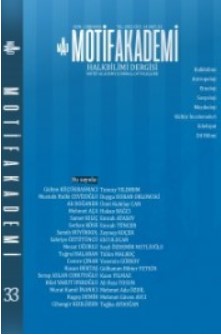TARİH VE EDEBİYAT İLİŞKİSİ BAĞLAMINDA ALEKSANDR NEVEROV’UN EKMEK ŞEHRİ TAŞKENT ÖYKÜSÜNDE 1921-1922 SOVYET KITLIĞI
IN THE CONTEXT OF THE RELATION OF HISTORY AND LITERATURE 1921-1922 SOVIET FAMİNE IN THE NOVEL OF ALEXANDER NEVEROV TASHKENT, CITY OF BREAD
Author(s): Yasemin GÜRSOY, Gülhanım Bihter YetkinSubject(s): Military history, Social history, Russian Literature, Studies in violence and power, Interwar Period (1920 - 1939)
Published by: Motif Halk Oyunları Eğitim ve Öğretim Vakfı
Keywords: Neverov; Tashkent; City of Bread; 1921-1922 Famine; Soviet Union;
Summary/Abstract: Having struggled with many famines throughout its historical journey, looking at the effects and consequences Russia fought the most violent struggle with the mass famine that broke out in 1921-1922 and brought terrible experiences to the Soviet people. When looked at the main causes of this famine, which affected a wide geography, it is seen that it stemed from two main factors. The first of the factors considered from a sociological perspective is that the economy of the country, whose main source of income was agriculture and which struggled with extremely important social events such as World War I, the October Revolution of 1917 and the civil war, lost its arable lands to a great extent during this time. Another factor explained in the physiological context is that the amount of rainfall in the first months of the famine year is below the seasonal norms and the amount of water required by the soils is not reached. As a matter of fact, news of famine began to come from various regions of the country as a result of the crop inefficiency brought by the drought. This famine, which increases in severity day by day, causes the population of the villages to flock to the cities irregularly and en masse. This period, during which the central and local governments were desperate for many other sociological problems, finds its most detailed expression in the work of the writer Aleksandr Neverov’s Tashkent, Cıty Of Bread, who personally experienced the process. The writer, who goes to Tashkent to find bread at the beginning of the famine, enriches what he observed in the meantime in his story on an autobiographical basis. This story, which tells the dramatic story of a young boy struggling to overcome the events that happened to him during his journey to Tashkent in order to save his family, is of great importance in terms of bringing to light a mass tragedy in the history of the USSR while succeeding to take its place among the classics of Soviet literature. In this study, in the context of the relationship between history and literature, the story Tashkent, Cıty Of Bread is examined and the social effects of the Soviet Famine of 1921-1922 are revealed.
Journal: Motif Akademi Halkbilimi Dergisi
- Issue Year: 14/2021
- Issue No: 33
- Page Range: 348-361
- Page Count: 14
- Language: Turkish

